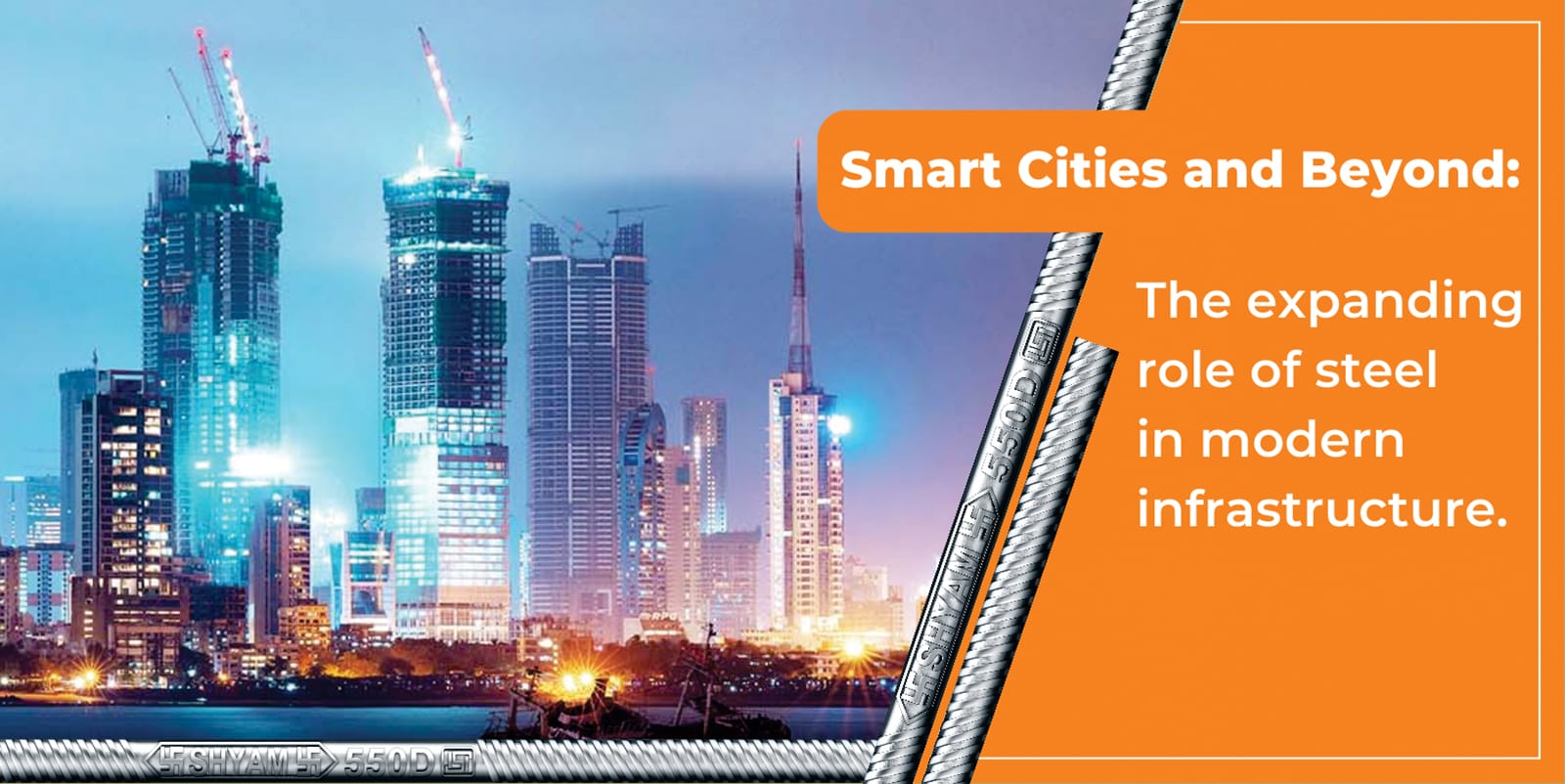Smart Cities and Beyond: The expanding role of steel in modern infrastructure
When we think of our future, AI-driven traffic systems, smart cities, and even green buildings come to our mind. But what keeps our futuristic visions tall is something extraordinary and completely grounded. It’s steel!
While steel might not be the first thing that comes to our mind when we think of a “smart city.” But steel is one of those unseen heroes that are instrumental in the process of fast-paced urbanization of landscapes. From rail transport infrastructure to green landscapes, steel is serving an increasingly growing role in the development of contemporary infrastructures.
Why does Steel form the backbone of Modern Infrastructure?
We all know that steel is strong, versatile, and durable from its core. But, beyond its traditional traits, steel’s contribution goes a long way. From smart cities to sustainable solutions, steel has always evolved to meet the demands and expectations of the new age. They have made buildings smarter, greener and more efficient.
Here is why steel continues to be an indispensable material compared to others.
- High Strength to Weight Ratios
Steel is perfect for high-rise buildings, bridges and towers.
- Flexibility in Design
Good quality steel can be molded to various shapes. It brings unique designs without losing its strength and durability.
- Recyclability
Steel is one of the most recyclable materials on earth which is suitable for sustainable construction.
- Quick Assembling
Steel structures can be assembled much faster compared to other traditional materials. It reduces labor expenses and construction time.
Steel is the Core of the Rise of Smart Cities
Smart cities are not just about mobile apps or enabling Wi-Fi-based traffic lights. They show how modern urban cities are planned and maintained. And steel forms an integral part of every layer of transformation for smart urban towns.
Sustainable Architecture
With climate forcing the construction industry to emerge, steel is also leading the way with the following.
- Green Steel: They are made using hydrogen instead of coal. It can significantly reduce carbon emissions.
- Energy-Efficient Buildings: Steel-framed buildings are well-designed for insulation, solar panels and other energy-saving materials.
- Adaptive Reuse: Steel structures can be easily dismantled and reused. It reduces construction waste to a large extent.
High Tech Transportation Networks
Even in modern transportation systems, steel forms the core material.
- Bullet Trains and Metro Projects: These projects need strong yet lightweight materials. They fit the bills perfectly.
- Bridges and Flyovers: Modular steel designs are perfect for faster installations and reduce traffic congestion.
- EV charging stations and smart parking: These structures are often made up of sleek steel for durability and longevity.
Smart Grids and Utility Infrastructures
Steel forms a crucial material for building the infrastructures that supply power to our cities.
- Transmission Towers
Steel is best known for its durability. They can handle heavy electrical loads.
- Wind and Solar Firms
Steel is the major material used by turbine towers and solar panel firms.
- Underground vaults
Steel structures are capable of protecting sensitive items beneath the city streets.
What is the Future of Steel in Infrastructure?
Beyond the smart cities, Steel has a better use, and its potential stretches further beyond.
Space Age Systems
From fulfilling Elon Musk’s ambitions to building NASA research centers, steel is also being looked at for building extraterrestrial structures. It is all due to its high resilience and strength.
Resilient Infrastructure for Different environmental conditions
In regions that are prone to earthquakes, floods and hurricanes, steel structures offer better resistance compared to other conventional materials.
Modular Constructions
With the increasing demands of household structures, modular steel is becoming very popular for the following.
- Emergency Hospitals.
- Temporary shelters.
- Affordable Urban Housing.
Steel Can Adapt Itself to the changing demands.
Despite all its advantages, what is it that makes steel adaptable to the changing conditions? From the industrial age to the urbanization of smart cities, steel has always formed the core of these projects. With innovations like self-heating steel, 3d printed steel components and AI-powered structural health monitoring systems, steel’s capabilities extend further and beyond.
Conclusion
Smart cities might be everything about sensors and data connected on a mobile app. But, all these are irrelevant unless the physical structure’s backbone is strong and resilient. Steel boasts an unparalleled quality of strength, flexibility and sustainability that guarantees the future to remain tall.
So, the next time you admire a skyscraper or charge your EV at a charging station, remember that steel is silently shaping the cities of tomorrow.

